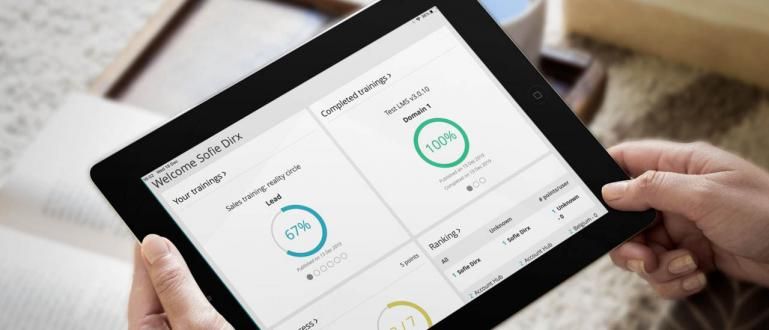This ProgramData folder is a 'forbidden' folder for ordinary users. Because usually they don't know for sure the function of this folder, so if they are tampered with, the consequences can be fatal. Not System32! This is the Most "Ker Folder"
For those of you who feel like one geek computer, of course you already know the ins and outs of folders ProgramData. However, there may still be many ordinary computer users who do not know about this folder in Windows. The reason is, Microsoft itself does not display this folder alias in-hidden.
The reason this folder is hidden from the eyes of Windows users is to maintain the security of the Windows operating system itself. This is done to avoid damage due to the contents of the folder being changed or deleted by ordinary users.
Yes, the ProgramData folder is a 'forbidden' folder for ordinary users. Because usually they don't know for sure the function of this folder, so if they are tampered with it can be messy.
- 10 Best PC & Laptop Screen Recording Apps 2020, Free!
- 7 Ways to Become a Real Computer Hacker
- How to Scan and Get Rid of Viruses on a Computer Without Antivirus
Watch out! Don't tamper with these forbidden folders in Windows
The question is what should you know about this folder and how do you display it? Reporting from HowToGeek, here's the full explanation.
What is ProgramData Folder?

As the name implies, the ProgramData folder is a place to store program data and application settings installed on the Windows operating system. Tools those running with system permissions can also save their settings in this folder. For example, an antivirus application can save its settings, viruses log, and files quarantined in C:\ProgramData.
Most programs use this folder as a location caching for data that should be available to all users, or for configuring some basic settings.
Programs store data in a number of different places in Windows. This depends on the developers. This ProgramData folder typically includes:
- App Data Folder: Most applications store their settings in the C:\Users\username\AppData folder. Each Windows user account has its own App Data folder, so each account has its own application data and settings.
- Documents folder: Many PC applications or games choose to save their settings under the Documents folder in the C:\Users\username\Documents. This makes it easier for people to find and edit these files.
- Registry: This is a center database which stores configuration settings for an operating system.
- Program files: If you install a software Photoshop, then the program file will be located in C:\Program Files\Photoshop.

How to Show ProgramData Folder
Sometimes we have to open this sacred folder for certain purposes. For example, to edit or delete the files in it when we do uninstall a program. Usually there is still data left in ProgramData which must be deleted manually.
The trick, open Windows Explorer, on address bar you double click and replace it with writing C:/ProgramData. Now, with this you can open the ProgramData folder which is located at C:/ProgramData. However, this way you can only open the folder, not bring it up.
Well, to bring up the hidden ProgramData folder on local disk C, it's actually very easy. You just need to turn off the feature hidden on settings options folder.

First open Windows Explorer, then turn off the feature hidden in Windows via the menu located above Windows Explorer. Then click menu view then tick Hidden Items. Now the C:\ProgramData folder can appear.
With this you don't just open the ProgramData folder. However, you've also brought it up, so it can be opened at any time without the hassle of writing down the address on the address bar. Oh yeah, you can also find settings options folder in the Control Panel.
Jaka reminds me once again, it's not recommended for those of you who don't understand to tamper with the files in the folder. Because I'm afraid it will happen error on a program or even a Windows operating system.









